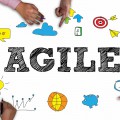Agile Practices in Nearshore Outsourcing Companies
— May 21, 2019Introduction to Agile Methodologies in Nearshore Outsourcing
Agile is one of the most commonly used software development methodologies today. Its primary goal is to deliver customer satisfaction by continuously incorporating user feedback throughout the software development life cycle (SDLC). Nearshore software outsourcing companies, which are particularly focused on delivering high-quality custom software, frequently use Agile methods due to the flexibility and effectiveness they offer. Agile allows these companies to produce software that is well-received by users and stands a higher chance of success. This article will explain the software development life cycle, the workings of Agile methodology, its benefits, and how managers can choose the right Agile approach for their next project.
Understanding the Software Development Life Cycle (SDLC)
The Software Development Life Cycle (SDLC) is a systematic process that software development teams follow to build high-quality software. It starts with identifying a customer’s pain point or problem. This is the initial planning phase, where stakeholders, project managers, and the development team gather to define the problem, the solution, and the structure of the development process.
Once the strategy and plan are defined, the project moves into the design phase. Here, engineers begin the development process, writing code and building out the initial software features. Agile methodologies, in particular, focus on creating a basic prototype early. This allows for feedback from a limited group of users before major resources are invested. Early user feedback helps in identifying flaws or problems early, ensuring the product meets the customer’s needs.
The final steps in the SDLC are testing, deployment, and maintenance. During testing, the software is rigorously examined for bugs, issues, and user experience problems. This testing is performed by a combination of manual testers, software engineers, and end-users. Once the software passes testing, it is deployed to a larger audience. After deployment, a team is assigned to maintain the software, addressing any new issues and pushing updates as needed.
Introduction to Agile Development Methodology
The Agile development methodology emerged from the Manifesto for Agile Software Development, created in 2001. This set of principles emphasized delivering high-quality software quickly, with continuous user feedback integrated throughout the development process. Agile became widely adopted across various industries, particularly in software development and outsourcing. The methodology is now a widely accepted standard in the software industry.
Agile’s main objective is to reduce the risks inherent in traditional software development models by focusing on customer feedback early and often. It promotes the idea of building a minimum viable product (MVP) as soon as possible in the development cycle. The MVP is released to a select group of end-users to gather feedback, which helps refine the product. This iterative process minimizes the risk of building features that customers don’t need or want, ensuring the product better meets their needs and expectations.
Agile is especially valuable for startups, companies with limited resources, or projects with unclear requirements. It allows companies to develop a working prototype quickly and gather feedback, which can then shape further development. This feedback-driven approach helps identify market viability early, giving businesses a chance to adjust quickly based on customer responses.
Popular Agile Methodologies
Several Agile frameworks have been developed to apply the core principles of Agile in different contexts. These frameworks provide structured approaches for managing software projects while maintaining flexibility. Three of the most widely used Agile methodologies are Scrum, Lean, and DSDM. Each has its unique strengths and can be chosen based on the nature of the project and the goals of the development team.
Scrum
Scrum is one of the most popular Agile frameworks, designed to organize teams and manage software projects more effectively. It was developed to address the challenges of managing software projects with Agile principles. Scrum breaks the project into small, manageable parts, called sprints, which are typically 2-4 weeks long. Each sprint has a defined goal and results in a working piece of software that can be tested and reviewed.
Scrum defines specific roles for team members, including the product owner, scrum master, and development team. The product owner is responsible for ensuring the project aligns with the customer’s needs. The scrum master helps remove obstacles and ensures the team stays focused on their tasks. The development team is made up of professionals responsible for building the software. One key feature of Scrum is its emphasis on teamwork and collaboration, where different teams work independently but must coordinate to meet the overarching goal.
One of the challenges of Scrum is the high level of autonomy given to each team. This independence requires strong communication and coordination, especially since there is no traditional project manager. The product owner becomes the primary point of contact for the project’s success, and their ability to keep teams on track is essential.
Lean
The Lean software development methodology is influenced by the principles of the Toyota Production System. Initially designed to improve manufacturing efficiency, Lean was adapted to software development in the early 2000s. Its main goal is to eliminate waste and enhance efficiency by focusing on delivering the most value with the least amount of resources.
The Lean approach encourages creating a minimum viable product as quickly as possible to test ideas and gather user feedback. The feedback is used to refine the product, focusing on the most valuable features first. Lean software development also emphasizes late decision-making, allowing teams to delay decisions until the information needed to make them is clear.
Lean is particularly suited for startups or companies creating new, innovative software. By testing small components and quickly iterating based on feedback, Lean allows these companies to conserve resources and focus only on what customers find most valuable. It encourages teams to build software incrementally, continuously improving it as feedback comes in.
DSDM (Dynamic Systems Development Method)
DSDM, or Dynamic Systems Development Method, has been in use since 1994 and predates the modern Agile movement. Although older than other Agile methodologies, DSDM remains a relevant framework for Agile software development, especially in complex projects. DSDM divides the software project into smaller components, each corresponding to a specific end-user requirement.
Each component is developed according to the user’s needs, and the development team focuses on delivering the product on time and within budget. The MoSCoW prioritization method is commonly used to define which features are most important. MoSCoW stands for Must Have, Should Have, Could Have, and Won’t Have, helping teams organize features based on their importance. This ensures that the critical elements of the software are built first, and additional features can be added in later stages.
DSDM is beneficial for projects that have clear goals and timelines but may need to accommodate changing requirements. It provides a structured approach to Agile development while maintaining flexibility for evolving project needs.
Choosing the Right Agile Methodology
Selecting the most suitable Agile methodology is critical for project success. The choice depends on specific factors such as team structure, project goals, and the nature of the work involved. Understanding the strengths and applications of different Agile methodologies ensures that teams can adapt effectively to changing requirements while maintaining focus and delivering value. Below, we explore popular Agile methodologies in detail and outline how to determine the best fit for your project.
Scrum: A Framework for Defined Roles and Collaboration
Scrum is one of the most widely used Agile methodologies, known for its structured approach and defined roles. It is ideal for teams that thrive with clear boundaries and responsibilities, as the framework emphasizes distinct roles such as the Product Owner, Scrum Master, and Development Team. These roles ensure accountability and facilitate communication.
Scrum operates through fixed-length iterations, or sprints, typically lasting two to four weeks. Each sprint concludes with a review and a retrospective, fostering continuous improvement. This iterative nature allows teams to deliver small, incremental changes, making it easier to incorporate feedback and refine the product.
Scrum is especially beneficial for large projects involving multiple teams. Its structure simplifies coordination, helping teams stay aligned while working toward a common goal. The emphasis on daily stand-ups and sprint planning sessions promotes transparency and quick issue resolution. This methodology is well-suited for projects with evolving requirements, where regular input from stakeholders is crucial.
Lean: Maximizing Value by Reducing Waste
Lean focuses on efficiency and delivering value by minimizing waste. It is particularly effective for startups and projects with limited resources, where optimizing time and effort is essential. By identifying and eliminating activities that do not contribute to the end product, Lean ensures that teams remain focused on tasks that generate the highest value.
This methodology emphasizes continuous delivery, enabling teams to respond quickly to market demands. Lean principles encourage building only what is necessary and refining the product incrementally based on user feedback. This approach is highly adaptable, making it an excellent choice for dynamic environments.
Lean also stresses the importance of empowering team members to make decisions, fostering a culture of ownership and accountability. Teams working under the Lean methodology are encouraged to experiment and learn from failures, enabling rapid innovation and improvement.
Dynamic Systems Development Method (DSDM): Structure for Complex Projects
DSDM is a structured Agile framework designed for managing complex projects. It offers a high level of organization, ensuring that teams meet deadlines while maintaining quality. DSDM emphasizes collaboration between stakeholders and the development team, promoting transparency and shared ownership of the project.
A key feature of DSDM is its focus on delivering work in prioritized increments. Teams use a MoSCoW prioritization system (Must have, Should have, Could have, Won’t have) to determine which tasks take precedence. This ensures that critical functionality is delivered first, aligning with project goals and stakeholder expectations.
DSDM is particularly suited for projects requiring a formalized approach, such as those involving multiple stakeholders or regulatory compliance. The framework provides clear guidelines for planning, execution, and evaluation, making it easier to manage complexity and maintain control.
Factors to Consider When Choosing an Agile Methodology
The decision to adopt a specific Agile methodology should consider several factors, including team size, project goals, and flexibility requirements. Understanding these elements ensures that the chosen framework aligns with the unique needs of the team and project.
Team size plays a significant role in selecting an Agile methodology. Smaller teams may find Lean more manageable due to its simplicity and focus on essential tasks. In contrast, larger teams or those collaborating across departments might benefit from Scrum’s structured approach to coordination.
The clarity of project goals also influences the choice of methodology. Projects with well-defined objectives may suit DSDM, as its structured nature provides a clear roadmap for achieving milestones. Conversely, teams working on exploratory projects or those prone to frequent changes might prefer Scrum or Lean, which allow for greater adaptability.
Flexibility is another crucial consideration. Some projects require a rigid structure to meet deadlines and stakeholder expectations, making DSDM an ideal choice. For teams needing the freedom to experiment and pivot based on new information, Lean offers a more suitable alternative.
Finally, consider the team’s familiarity with Agile principles. For teams new to Agile, Scrum provides a straightforward introduction with its clear roles and iterative processes. Experienced teams with a deep understanding of Agile values may prefer Lean or DSDM for their specific benefits.
Conclusion
Agile methodologies have become a standard in software development due to their flexibility, efficiency, and focus on user feedback. By adopting Agile approaches, nearshore outsourcing companies can produce software that better meets customer needs, reduces risks, and increases the likelihood of success. Managers should carefully consider which Agile methodology works best for their project, keeping in mind factors like team structure, project complexity, and the importance of user feedback.
Whether choosing Scrum, Lean, or DSDM, each methodology offers a proven framework to develop high-quality software efficiently.
By evaluating factors such as team size, project goals, and flexibility needs, organizations can select the methodology that best aligns with their objectives. A well-chosen Agile framework ensures a smoother development process, greater adaptability, and successful project outcomes.







